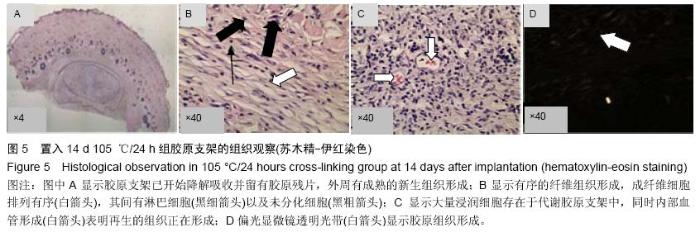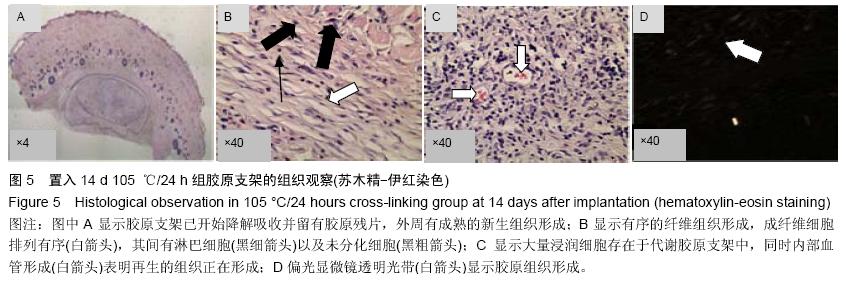| [1] Yannas IV,Burke JF.Design of an artificial skin. I. Basic design principles.J Biomed Mater Res. 1980;14(1):65-81.[2] Krane SM. Collagenases and collagen degradation. J Invest Dermatol 1982;79(Suppl 1):83S-86S.[3] Wang MC,Pins GD,Silver FH.Collagen fibres with improved strength for the repair of soft tissue injuries. Biomaterials. 1994;15(7):507-512.[4] Harley BA,Spilker MH,Wu JW,et al.Optimal degradation rate for collagen chambers used for regeneration of peripheral nerves over long gaps.Cell Tiss Org.2004;176:153-165. [5] Krevolin J,Liu JJ,Wallen A,et al.Tissue ingrowth in resorbable porous tissue scaffolds. In the Proceedings of the 35th Int.Conf on Advanced Ceramics and Composites. The American Ceramic Society, Westerville, Ohio.2011.[6] Cholas R,Hsu HP,Spector M.The reparative response to cross-linked collagenbasedscaffolds in a rat spinal cord gap model.Biomaterials.2012;33:2050-2059.[7] Vickers SM,Squitieri LS,Spector M.Effects of cross-linking type II collagen-GAG scaffolds on chondrogenesis in vitro: dynamic pore reduction promotes cartilage formation.Tissue Eng. 2006;12(5): 1345-1355.[8] Yannas IV, Tobolsky AV. Cross linking of gelatine by dehydration. Nature. 1967; 215(100):509-510.[9] Chamberlain LJ,Yannas IV,Hsu HP,et al.Collagen-GAG substrateenhances the quality of nerve regeneration through collagen tubes up to the level of autograft. Exp Neurol.1998; 154:315-329.[10] Pieper JS,Oosterhof A,Dijkstra PJ,et al.Preparation and characterization of porous crosslinked collagenous matrices containing bioavailable chondroitin sulphate. Biomaterials. 1999;20(9):847-858.[11] 许和平.保持胶原特有三螺旋结构的I型医用胶原材料及其产品和应用:中国,10148137.0[P]. 2009-06-23.[12] Soller EC.Cell-mediated contraction & induced regeneration of the injured peripheral nerve. MIT. 2011:29.[13] Vickers SM,Gotterbarm T,Spector M.Cross-linking affects cellular condensationand chondrogenesis in type II collagen- GAG scaffolds seeded with bone marrowderivedmesenchymal stem cells.J Orthop Res. 2010;28(9):1184-1192. |





